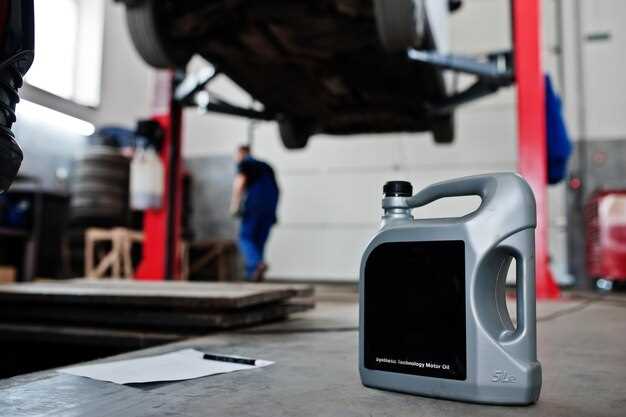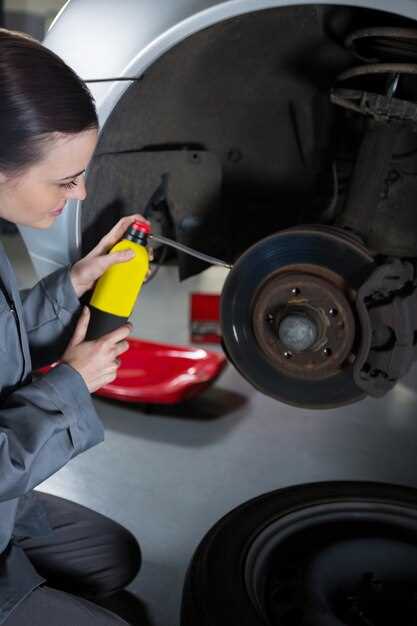
Choosing the Right Brake Fluid for Racing
- George Harris
- 0
- Posted on

In the high-stakes world of motorsport, every component of a racing vehicle plays a critical role in achieving peak performance. Among these components, brake fluid often goes overlooked, yet it is fundamental to ensuring reliability and effectiveness during high-speed racing conditions. The right brake fluid not only influences braking performance but also affects the overall safety, handling, and responsiveness of a vehicle under extreme pressures.
Brake fluids come in various formulations, each designed to meet specific requirements of performance, temperature stability, and moisture absorption. When selecting brake fluid, factors such as boiling point, viscosity, and compatibility with brake system materials should be carefully considered. Understanding these characteristics will enable racers to make informed choices that align with their vehicle’s demands and their racing style.
Moreover, the performance of brake fluid declines over time due to moisture absorption and increased heat exposure, making regular checks and fluid changes essential for maintaining an optimal racing setup. Selecting a high-quality, suitable brake fluid is not just a technical choice; it is a strategic decision that can make the difference between winning and losing on the track.
Understanding Brake Fluid Types and Their Impact on Racing

In motorsport, the performance of a vehicle’s braking system is paramount, and selecting the right brake fluid can significantly enhance that performance. The two primary types of brake fluids used in racing are DOT (Department of Transportation) fluids and non-DOT fluids, each having specific characteristics that influence their performance under extreme conditions.
DOT fluids, categorized from DOT 3 to DOT 5.1, vary in their boiling points, with higher numbers indicating increased resistance to thermal degradation. For racing applications, DOT 4 and DOT 5.1 fluids are commonly preferred due to their higher dry boiling points, generally above 300°F (150°C). This is crucial during races where sustained high-speed braking can lead to overheating and potential brake fade.
Another essential factor is the hygroscopic nature of DOT fluids, particularly the lower-grade types. They absorb moisture over time, reducing their effectiveness and increasing the risk of vapor lock. This effect is often amplified in a racing environment, where rapid changes in temperature and humidity can occur. Thus, racers should frequently change their brake fluid to maintain optimal performance and minimize moisture-related issues.
Non-DOT fluids, such as those based on synthetic compounds, offer distinct advantages for specific racing conditions. For instance, fluids such as Castrol SRF or Motul RBF 660 boast exceptional dry boiling points (often exceeding 330°F or 165°C) and a lower tendency to absorb moisture, providing a more stable performance in high-stress situations. These fluids typically cater to professional-level racing applications, where performance margins are minimal and the consequences of brake failure are significant.
It’s also important to consider compatibility with brake system components. Many racing vehicles utilize components made from aluminum or specific elastomers that can be adversely affected by certain brake fluids. For example, while DOT 5 is silicone-based and non-hygroscopic, it is not compatible with ABS systems and should be avoided for most racing applications.
Ultimately, the choice of brake fluid influences not only the performance of the braking system but also vehicle safety during races. Racing teams must balance factors such as boiling points, moisture absorption, and system compatibility to select a brake fluid that meets their specific racing conditions and performance objectives.
Identifying the Right Specifications for Track Conditions
When preparing for competitive racing, selecting the appropriate brake fluid specifications is crucial for achieving optimal performance on the track. Different track conditions, ranging from dry asphalt to wet surfaces, can significantly impact the effectiveness of your braking system. Understanding these conditions allows you to tailor your brake fluid choice accordingly.
Firstly, consider the boiling point of the brake fluid. For high-temperature environments typically found on racing circuits, it’s essential to choose a fluid with a high dry boiling point (DBP) and wet boiling point (WBP). Fluids with a DBP above 600°F (316°C) are recommended for extreme racing situations, where brake temperatures can soar. Wet boiling point values should also be high to ensure fluid stability over time, especially when moisture accumulation occurs.
Secondly, take into account the viscosity of the brake fluid. Fluid viscosity can affect brake responsiveness, particularly under varying temperatures. Racing environments often experience rapid temperature changes, requiring a low-viscosity fluid that maintains its performance attributes. Look for fluids that provide consistent performance across a broad temperature range.
Another aspect to consider is the compatibility with your braking components. Some racing calipers and seals may have specific fluid requirements to prevent swelling or damage. Always check manufacturer recommendations to avoid potential failures during critical moments on the track.
Lastly, environmental factors should influence your choice. In conditions with higher humidity, moisture absorption becomes a concern. Selecting a brake fluid with low hygroscopicity can help maintain performance stability, especially in endurance races where fluid longevity is essential.
By carefully evaluating these specifications based on track conditions, you can ensure that your braking system performs at its best, ultimately contributing to a successful racing experience. Proper selection of brake fluid will enhance braking performance, mitigate the risk of brake fade, and improve overall vehicle control.
Maintaining Brake Fluid Integrity During Competitive Events

Ensuring the integrity of brake fluid in a racing environment is crucial for optimal performance and safety. Brake fluid is hygroscopic, meaning it absorbs moisture over time, which can lead to a decrease in its boiling point and performance under extreme conditions. Therefore, a thorough understanding of maintenance practices is essential.
Regularly checking the brake fluid level and quality is a fundamental practice. It’s advisable to inspect the brake fluid reservoir before each event. Look for signs of contamination or discoloration, which can indicate the presence of water or debris. If the fluid appears cloudy or dark, it may need to be replaced to ensure reliable braking performance.
Periodic fluid changes are necessary, particularly in high-intensity racing scenarios. Flushing the system before the start of the racing season or after a series of events can prevent moisture buildup. Using a moisture test strip can also indicate the fluid’s condition, allowing for timely replacements when the contamination level reaches critical points.
Proper storage of brake fluid is another critical aspect. It should be kept in a sealed container and away from heat sources to prevent degradation. Always use fresh fluid from a reputable source to guarantee consistency in performance. Avoid mixing different brands or types of brake fluid, as compatibilities may vary and can lead to unpredictable results.
Also, consider using high-performance brake fluid that is specifically designed for racing conditions. Fluids with a higher boiling point will provide better performance under extreme braking conditions, reducing the likelihood of brake fade. Choose products that have been tested in racing scenarios to ensure reliability.
Finally, monitor the overall braking system condition. Regular checks on brake lines and components can prevent leaks or air entering the system, which can significantly compromise brake fluid integrity. Effective maintenance not only preserves fluid quality but also enhances safety and performance on the track.
